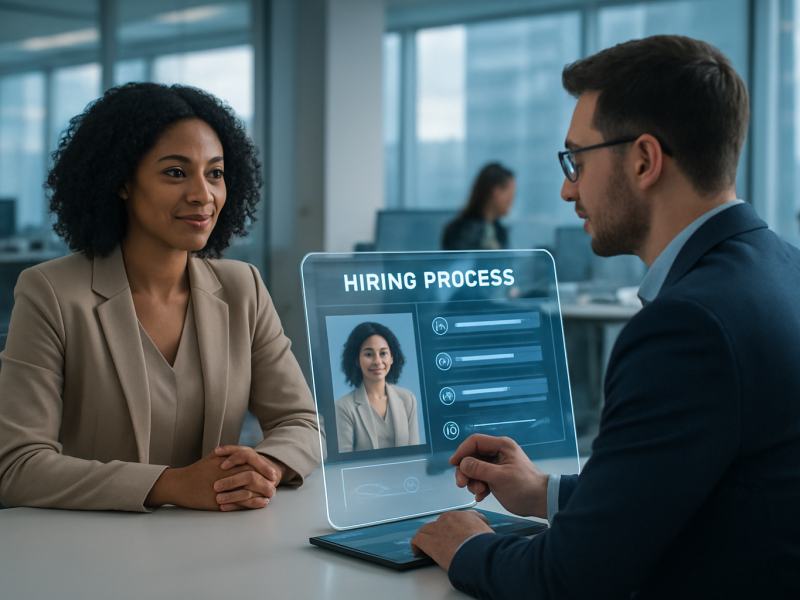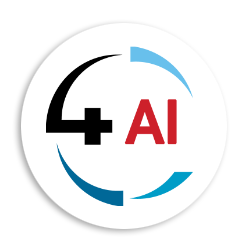Blog
How AI, Psychology & Employer Branding Are Changing Recruitment

In today’s ultra-competitive job market, recruiting top talent isn’t just about job specs and CVs. It’s about understanding human behavior, leveraging technology, and creating memorable experiences that influence how candidates think and feel about your company—even before the first interview.
Recruitment has evolved into a strategic blend of psychology, branding, and AI innovation. Those who understand this shift are not just filling roles—they’re building high-performing, engaged teams for the future.
Clipdrop, The Role of AI in Employer Branding and Recruitment – an eye-opening look at how artificial intelligence is reshaping the hiring process.
Explore how AI can influence candidate decision-making, strengthen your employer branding, and ultimately transform the way you recruit.
Behavioral Psychology: The Hidden Driver Behind Decision-Making
At the core of this new approach is behavioral psychology—the study of how thoughts, emotions, and actions interact. It emphasizes that behavior is largely influenced by external stimuli, perceptions, and learned experiences. When applied to recruitment, these insights can fundamentally change how we attract and connect with talent.
Consider this: the way a job is introduced—its visuals, tone, even the sequence of information—can make the role seem exciting and full of purpose, or dull and transactional. That’s the psychology of suggestion and perception in action.
Simple experiments illustrate how easily our minds are influenced:
- Can a rotating image or an illusion make your brain believe something that isn’t there?
- Can mythological stories shape how we perceive truth?
In recruitment, perception is reality. And that reality can be shaped with intention.
Your Employer Brand: More Than Just a Logo
Too many organizations treat employer branding as a surface-level exercise. A catchy tagline, a few stock photos, and a generic “Why Work With Us” page won’t cut it anymore.
Employer branding is your identity as a workplace. It's what potential candidates think and feel when they hear your company name. It’s communicated through your values, your people, and the stories you tell.
There are five critical areas every employer brand must clearly define and communicate:
- Who is the company? – Share your purpose, mission, and what you stand for.
- What is the team like? – Highlight the diversity, skills, and personality of the team.
- What’s the culture like? – Go beyond buzzwords. Show what a day in the life really feels like.
- What are the job requirements? – Be transparent about expectations, challenges, and success metrics.
- What is your EVP (Employee Value Proposition)? – Make it clear why someone should choose your company over others.
When these elements are communicated well, candidates feel connected even before they apply. That’s the power of storytelling backed by psychology.
The Neurochemical Edge: Using Dopamine & Serotonin
Modern recruitment isn’t just about strategy—it’s about chemistry too. Two neurochemicals, dopamine and serotonin, play major roles in how people experience recruitment journeys.
- Dopamine drives motivation, excitement, and the pursuit of rewards.
- Serotonin supports feelings of well-being, connection, and calm.
When candidates feel a sense of anticipation or emotional engagement—like when watching a compelling team video or getting a thoughtful email follow-up—these chemicals spike. The result? They’re more likely to feel positively about your company and more inclined to take action.
This is why leading companies now use short-form video, storytelling, and social engagement in recruitment campaigns. It’s not just modern—it’s neurologically effective.
Culture Problems: The Silent Deal Breaker
No matter how polished the brand or attractive the salary, culture remains the number one reason candidates say yes—or walk away.
There’s often a major disconnect between what leaders think the culture is and what employees experience on the ground. In one case study, a company won “Employer of the Year,” yet six months later, internal surveys showed only 22% of employees across all levels felt positively about the culture.
This highlights the importance of measuring culture from multiple perspectives and regularly. Authentic culture doesn’t come from HR alone—it’s shaped by behavior, policies, and how people treat each other daily.
If your internal culture doesn’t match your external message, the talent you attract won’t stay for long.
The Rise of AI in Hiring
With AI rapidly advancing, it's natural to ask: Can machines really conduct interviews?
The answer is yes—and in some cases, better than humans.
AI-driven tools are now capable of:
- Analyzing video interviews for tone, honesty, and enthusiasm.
- Identifying behavioral cues that correlate with job fit.
- Automating candidate shortlisting using both hard and soft skill data.
But AI isn’t here to replace human recruiters. It’s here to enhance their decision-making. By combining AI’s analytical power with human empathy and insight, organizations can create smarter, faster, and more inclusive hiring processes.
Imagine a world where:
- Candidate introductions are personalized in real-time.
- Interviews are analyzed for communication patterns and emotional intelligence.
- Data guides every stage—from screening to onboarding.
That world isn’t five years away—it’s already here.
Video is No Longer Optional
The average attention span is shrinking. If you want to capture and keep a candidate’s interest, video is no longer optional.
Videos showcasing your team, workspace, values, and leadership humanize your brand and elevate your appeal. They trigger serotonin and dopamine, creating an emotional imprint that words alone can’t achieve.
Social platforms have already proven the impact of video content. Now it’s time for recruitment teams to leverage that same psychological power.
Performance, Storytelling & Tech: The New Recruitment Formula
Recruitment today is about performance—not just in terms of metrics, but in how stories are performed and received.
Everything from your job posts to onboarding emails should be crafted like a performance:
- Clear structure.
- Emotional hooks.
- Compelling visuals.
- Honest, inspiring messages.
And with tools that blend AI with behavioral insights, recruitment becomes more than a process—it becomes an experience.
The Bottom Line
Attracting great talent has never been more complex—or more exciting.
Those who understand how behavioral psychology, employer branding, and AI intersect will lead the next era of recruitment. It's not about tricking people into applying—it's about reaching them where they are, emotionally and cognitively, and building trust before a contract is even signed.
Want to learn how to implement these strategies in your hiring process? Reach out to our team at This email address is being protected from spambots. You need JavaScript enabled to view it..
Let’s rethink recruitment—not as a funnel, but as a journey of influence, insight, and innovation.


